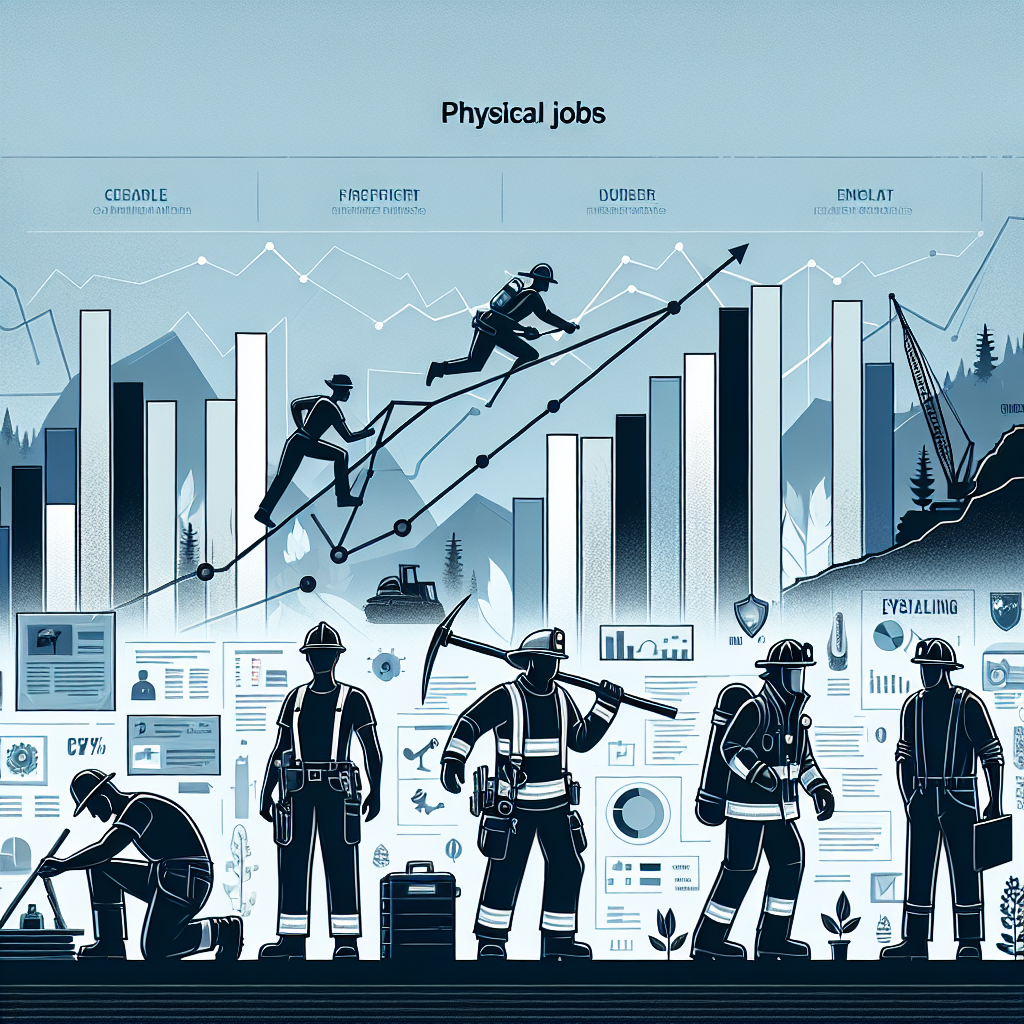Highest Paying Physical Jobs: Latest Trends and Updates are reshaping how skilled trades and hands-on professions are valued in today’s labor market. As automation and remote work expand, many physical, on-site careers remain in high demand and increasingly well-paid thanks to shortages of trained workers, increased safety protocols, and rising project complexity. This article examines which manual and blue-collar roles are commanding top wages, what trends are driving pay increases, and practical ways to enter or advance in these fields.
Highest-Paying Hands-On Jobs — Current Trends
Several sectors show persistent growth in compensation for physically intensive roles: construction and extraction, industrial maintenance, transportation, and health-related hands-on roles such as advanced dental technicians and specialized emergency responders. Geographic demand, union representation, and credentialing (licenses, certifications, apprenticeships) play large roles in wage differentials. For evidence-based labor statistics and occupational profiles, consult the Bureau of Labor Statistics’ construction and extraction overview for details on wages and job outlook.
In many regions, shortages of journeymen-level technicians and certified tradespeople have pushed employers to offer sign-on bonuses, apprenticeship pay scales, and retention incentives. Additionally, new infrastructure spending and energy projects have created demand spikes for pipeline welders, heavy equipment operators, and specialized electricians.
Top-paying physical occupations to watch
- Commercial airline and helicopter mechanics — high certification requirements and safety-critical work raise pay.
- Power plant and industrial machinery operators — specialized technical skill and regulatory compliance create scarcity value.
- Elevator installers and repairers — a small workforce with specialized training commands premium wages.
- Construction managers with trade backgrounds — on-site leadership paired with hands-on skills boosts compensation.
- Skilled welders for oil, gas, and heavy fabrication — pipeline and offshore projects often pay top rates.
Why wages are rising for manual careers
Several forces are converging to increase earning potential in physical jobs:
- Demographic shifts: retirements among veteran trade workers create openings and upward pressure on pay.
- Infrastructure investment: governments and private sectors are funding large-scale projects requiring skilled labor.
- Technological complexity: even manual roles now require digital literacy (diagnostic tools, CNC, PLCs), so employers pay more for hybrid skills.
- Safety and regulation: higher liability and compliance standards increase the value of certified, experienced workers.
How to break into or advance in high-paying physical roles
Career pathways commonly include apprenticeships, community college technical programs, industry certifications, and on-the-job training. Networking with local unions, trade associations, and workforce development boards often yields entry-level placements. For college students and recent graduates seeking on-site work or trade placements, specialized job boards and curated listings can help you find apprenticeships, internships, and paid training programs—see the ultimate guide to job boards for college students in the USA (free and paid options) for resources tailored to early-career job seekers.
Pairing hands-on experience with certifications—such as HVAC EPA certification, commercial driver’s license (CDL), welding certification, or electrician journeyman credentials—can accelerate earnings. Employers increasingly value candidates who combine manual proficiency with problem-solving and basic digital skills.
Regional and industry differences
Pay for the same physical role can vary widely by state and industry. Energy-sector roles (offshore oil, LNG projects), utilities, and specialized manufacturing often pay top-of-market wages. Urban construction markets with unionized workforces historically offer better hourly rates and benefits than non-union equivalents. Always research regional demand and prevailing wage standards when planning a move or choosing training.
Safety and long-term career planning
High-paying physical jobs can be physically demanding and sometimes hazardous. Long-term planning should include strategies for career longevity: pursue cross-training, aim for supervisory roles that reduce daily physical strain, and secure health and retirement benefits where possible. Employers increasingly offer tuition reimbursement and career ladders that move workers into supervisory or technical inspection roles with higher pay and lower wear-and-tear.
Quick tips for jobseekers
- Obtain recognized certifications early—these are often minimum qualifications for higher pay.
- Consider apprenticeships to earn while you learn and to gain industry connections.
- Look at regional demand forecasts and project pipelines before committing to long training programs.
- Build digital skills that complement manual trades (diagnostics, CAD basics, PLC troubleshooting).
Further reading and labor data
For authoritative occupational outlooks and wage data, reference occupational-specific pages from government labor publications such as the Bureau of Labor Statistics’ occupational handbook on construction and extraction occupations: BLS construction and extraction occupations overview.
FAQ
Q: Which physical job typically pays the most without a four-year degree?
A: Trades like elevator installer, commercial pilot mechanic, and certain welding or pipeline specialties often yield top earnings without a bachelor’s degree, especially when paired with certifications and experience.
Q: Are physical jobs at risk from automation?
A: Some routine manual tasks are automatable, but many high-paying physical roles require situational judgment, certifications, and complex problem-solving that are less susceptible to automation in the near term.
Q: How can I increase earning potential over time?
A: Gain certifications, pursue apprenticeships, specialize in niche sectors (e.g., renewable energy installations, high-voltage systems), and transition into supervisory or technical inspection roles to maintain earning growth while reducing physical strain.



